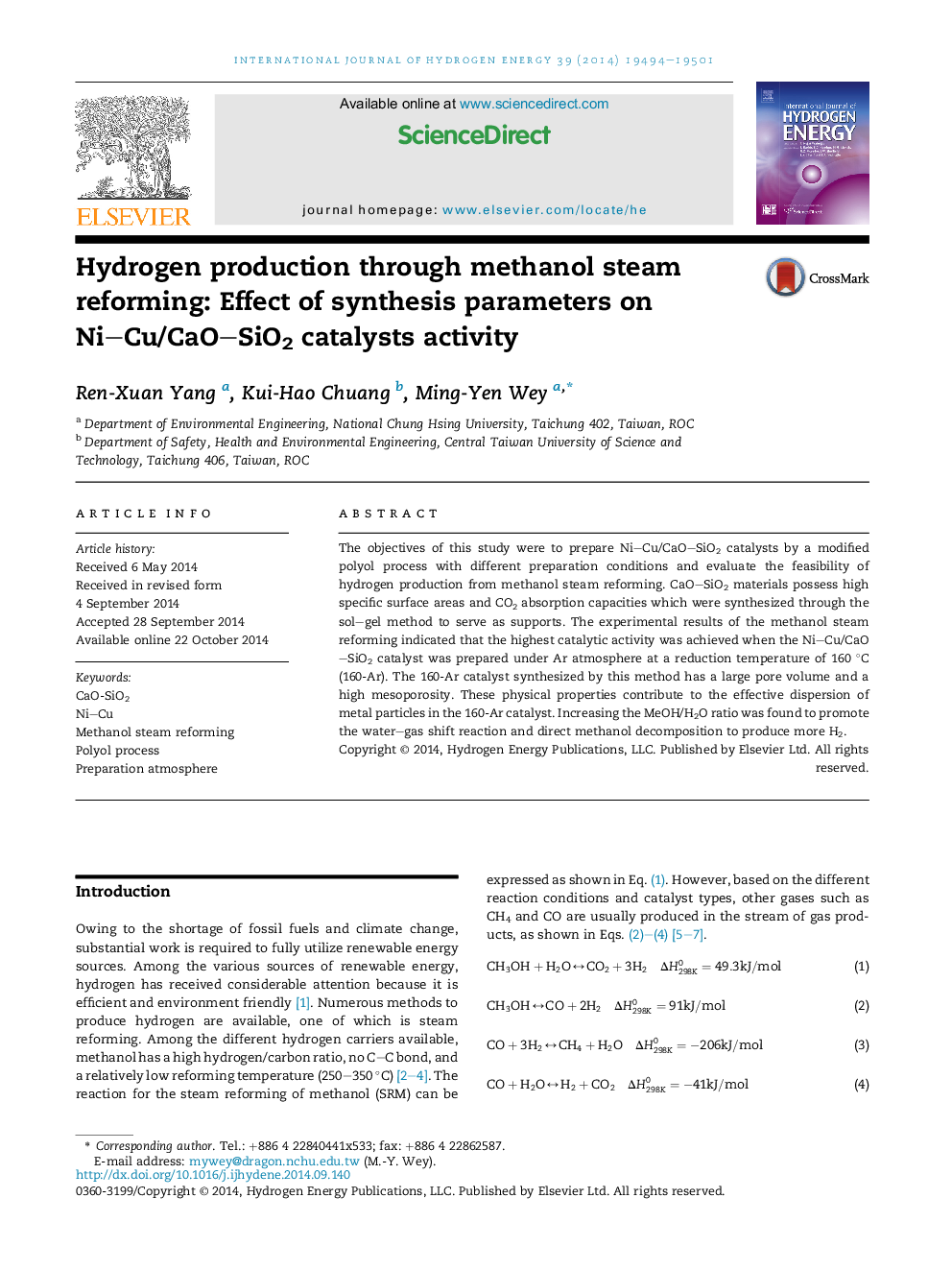| Article ID | Journal | Published Year | Pages | File Type |
|---|---|---|---|---|
| 1280701 | International Journal of Hydrogen Energy | 2014 | 8 Pages |
•CaO–SiO2 has high surface area, porous structure, and CO2 sorption capacity.•Ni and Cu can be loaded on the support via a modified polyol process.•Ni–Cu/CaO–SiO2-160-Ar catalyst exhibits good catalytic performance.•Effects of synthesis parameters were investigated for methanol steam reforming.
The objectives of this study were to prepare Ni–Cu/CaO–SiO2 catalysts by a modified polyol process with different preparation conditions and evaluate the feasibility of hydrogen production from methanol steam reforming. CaO–SiO2 materials possess high specific surface areas and CO2 absorption capacities which were synthesized through the sol–gel method to serve as supports. The experimental results of the methanol steam reforming indicated that the highest catalytic activity was achieved when the Ni–Cu/CaO–SiO2 catalyst was prepared under Ar atmosphere at a reduction temperature of 160 °C (160-Ar). The 160-Ar catalyst synthesized by this method has a large pore volume and a high mesoporosity. These physical properties contribute to the effective dispersion of metal particles in the 160-Ar catalyst. Increasing the MeOH/H2O ratio was found to promote the water–gas shift reaction and direct methanol decomposition to produce more H2.
